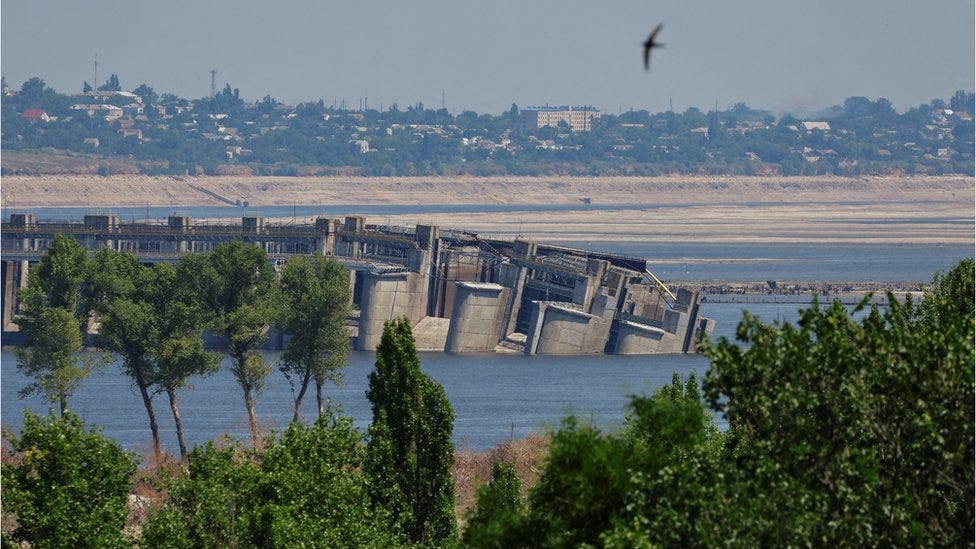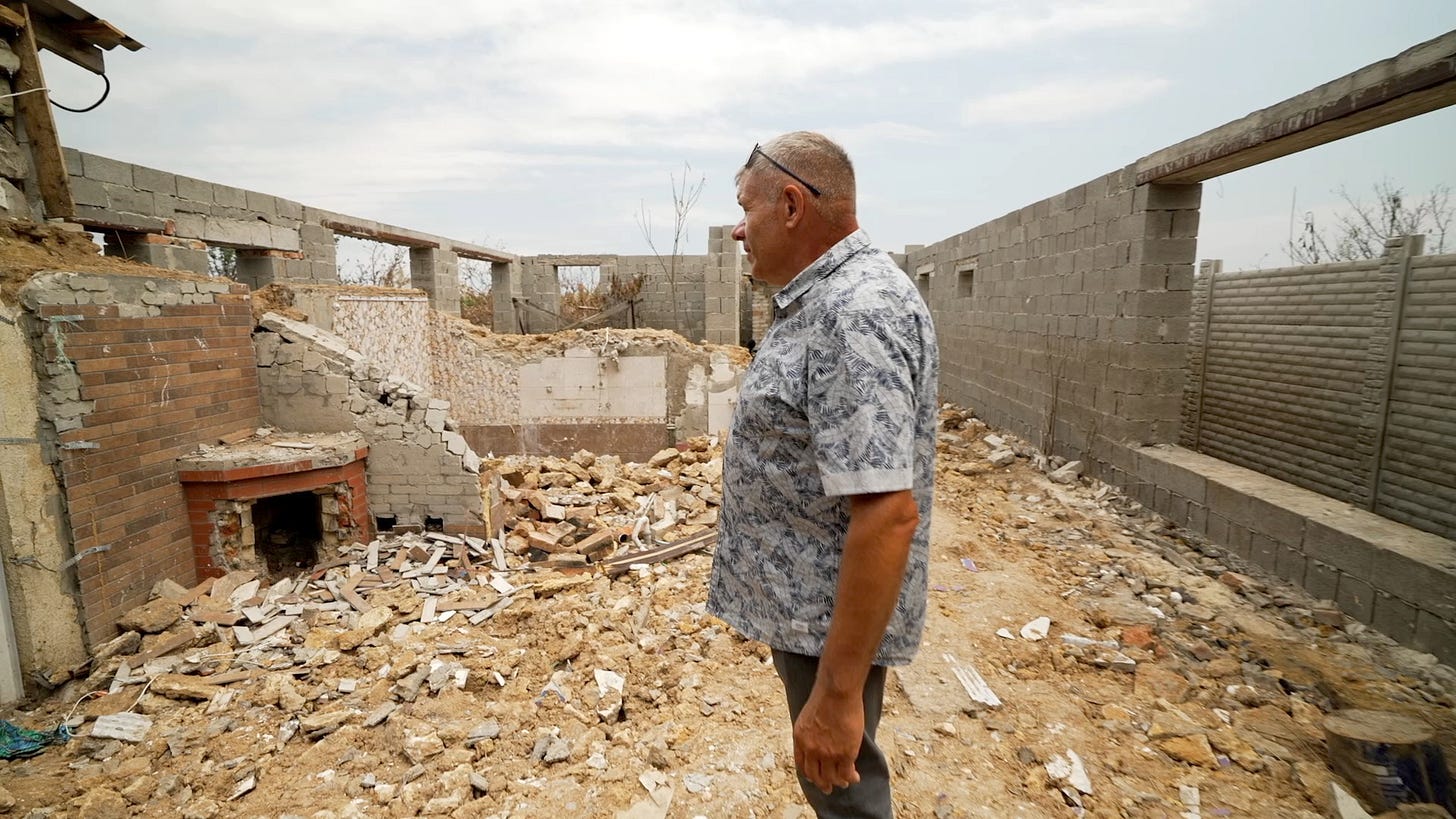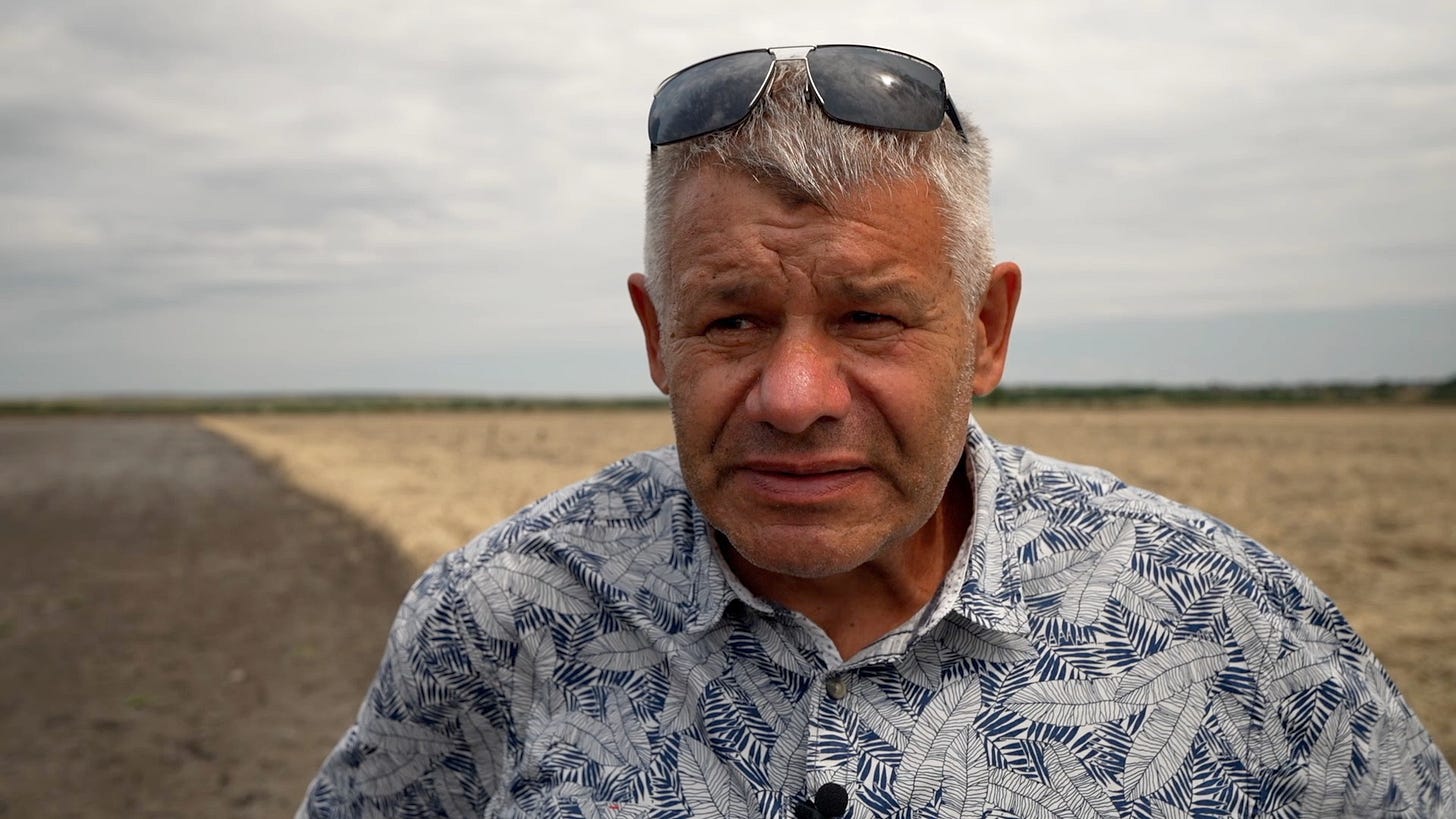Rebuilding homes and lives after Ukraine’s dam collapse
Despite water shortages, losing loved ones, homes and crops, people affected by the collapse of Ukraine's Kakhovka dam are determined to rebuild.
By Viktoriia Zhuhan in the south of Ukraine and Kateryna Khinkulova in London for BBC World Service.
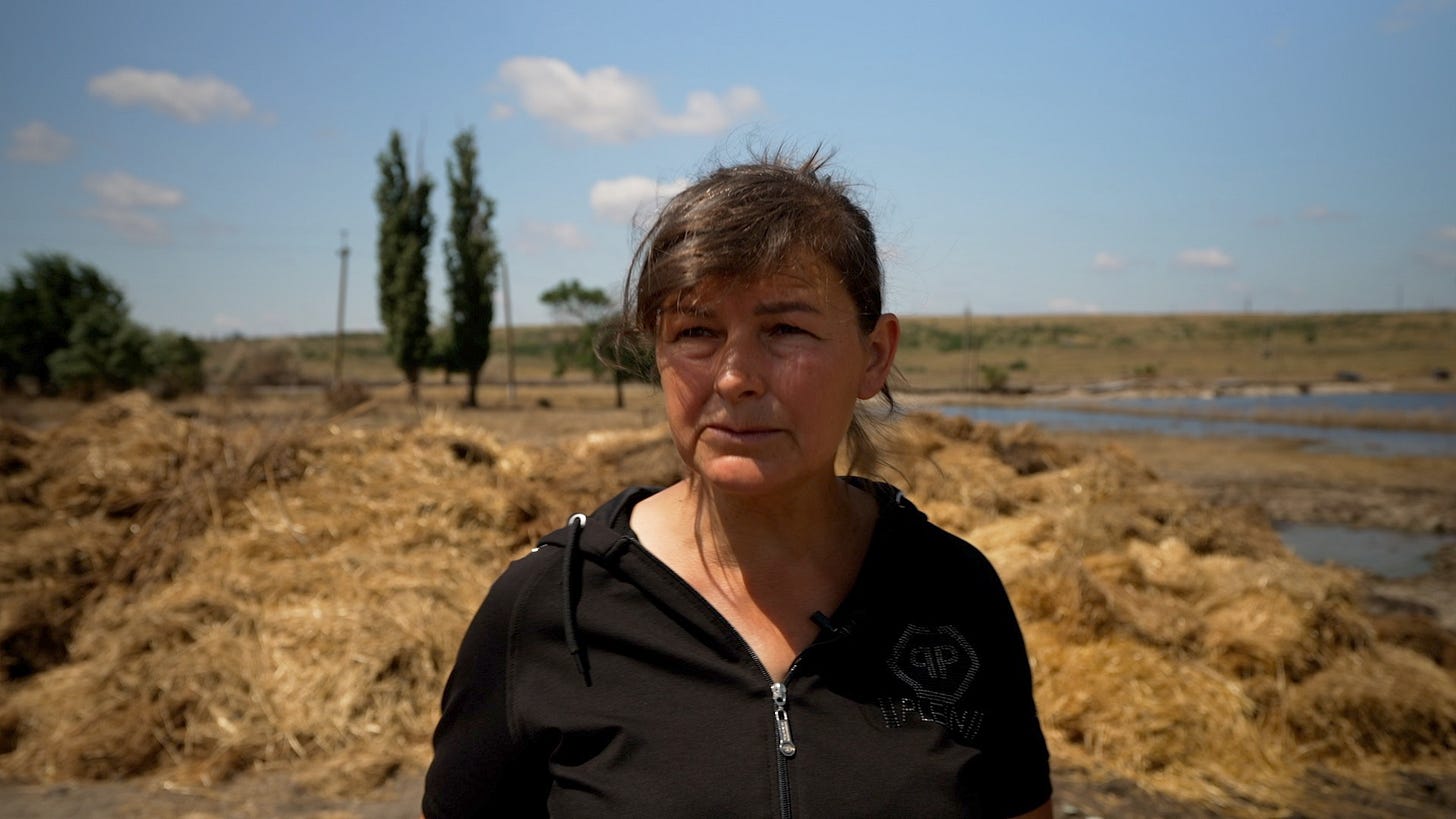
In early June a key dam holding back a vast reservoir in the south of Ukraine was destroyed. Months on, the lasting consequence of this disaster, the UN believes, is set to be a lack of water for growing grain, Ukraine’s global export. Locals are looking for solutions.
The destruction of the three-kilometre long Kakhovka dam brought a devastating flood, taking at least 58 lives, washing away tens of thousands of homes and ruining extensive farmlands. It jeopardised Ukraine’s ability to grow produce, including for global export, needed to bring down world food prices.
Shocking as it occurred, the dam breach soon faded from the headlines. Our team decided to travel to the south of Ukraine, a region which even before the flood had experienced Russian occupation and heavy fighting. We got a first-hand account of what life was like there, months after the dam destruction to understand its consequences for Ukraine and beyond.
“All was lost”
52-year old Svitlana Kridiner owns a small dairy farm in the village of Afanasiivka in the Mykolaiv region in the south of Ukraine, 70 km from the Kakhovka dam. For her and her husband Vasyl their life’s work is in the two dozen cows they grew from baby calves.
Before the war, they sold milk to a local dairy-processing plant but with the start of hostilities it became too dangerous for drivers to collect the milk.
“We started giving it away here in the village,” Svitlana says. “A few days later Russians were up on the slopes around our village. And where would we go?”
After the liberation last autumn the village is not far from the frontline and is contaminated with munition. Svitlana shows us a rocket, stuck in the ground in one of the meadows where her husband mows hay.
“He needs to go around it,” she explains.
When the news of the Kakhovka breach reached the village, Svitlana and her neighbours knew before long they would be hit by the flood.
“Two days after the explosion, on 8 June, it started coming around 17:00. We packed quickly. We only had time to take what we needed for the cows: milking kits, a generator. We also took our livestock: cows, dogs, ducklings. All other possessions we had to leave behind. And they were all lost.”
By 22:00 on the same day the water was by the farm, Svitlana tells us.
When we visited her, the farm was no longer under water but the signs of damage were everywhere.
Svitlana showed us water marks inside her farm building, close to the ceiling, and explained that most of the hay she and her husband had prepared to feed their cows in winter, had been destroyed. So was other animal feed, which got wet and even after water had receded, couldn’t be used any more.


“Water rose by six metres. But at least the farm building had survived,” says Svitlana. “Only the floor got washed away but the walls still stand. We thought it would get destroyed.”
She says the government is offering a small sum of money (5,000 UAH, or £111) as compensation for the flood damage but it’s not anywhere near enough to repair everything.
Yet she is not disheartened.
“Maybe we will take out another loan, we will mow some hay for the cows or buy some more. We will make it, rest assured.”
How the dam was destroyed
The Kakhovka dam, a key part of the Kakhovka hydroelectric power plant, was blown up on 6 June. Ukraine accused Russia of the act, while Russia said it was “another terror act by Kyiv”.
The city of Nova Kakhovka, where the plant and the dam were situated, had been under the Russian occupation from the start of the full-scale invasion of Ukraine in February last year.
Two days after the breach, a Norwegian agency analysed seismic signals from a regional station in Romania, which indicated that an explosion coinciding in time with the collapse of the dam had been registered. The location of the explosion was reported to be within a 20 miles radius of the dam.
The New York Times interviewed a number of engineering experts who agreed that such explosions were most likely to be instigated by Russia, as the side controlling the power plant.
An international team of lawyers assisting Ukraine in investigating the incident also believed there was a high probability the dam was destroyed by explosives placed inside it.

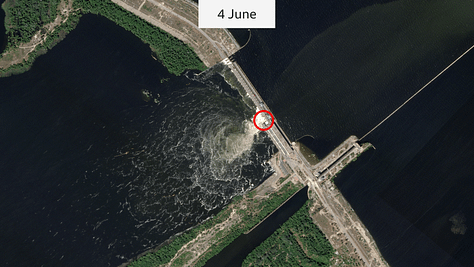

Built in the 1950s, the vast concrete dam was part of the infrastructure ensuring water supply for local farming.
UN Food and Agriculture Organisation (UN FAO) economist Monika Tothova explained to us: “The Kakhovka dam and reservoir were an important source of water, allowing these steppes, which were previously dry, to be used for agricultural production.”
Now that this source is removed, FAO believes, the region will have to rely on rainfall to provide adequate irrigation for the crops grown here and it may prove difficult.
“Unless there is a rebuilding process,” says Tothova.
Within hours of destruction, the city and nearby towns and villages for miles were under water, both on the Ukrainian-controlled western bank of the Dnipro river and the Russian-occupied eastern bank.
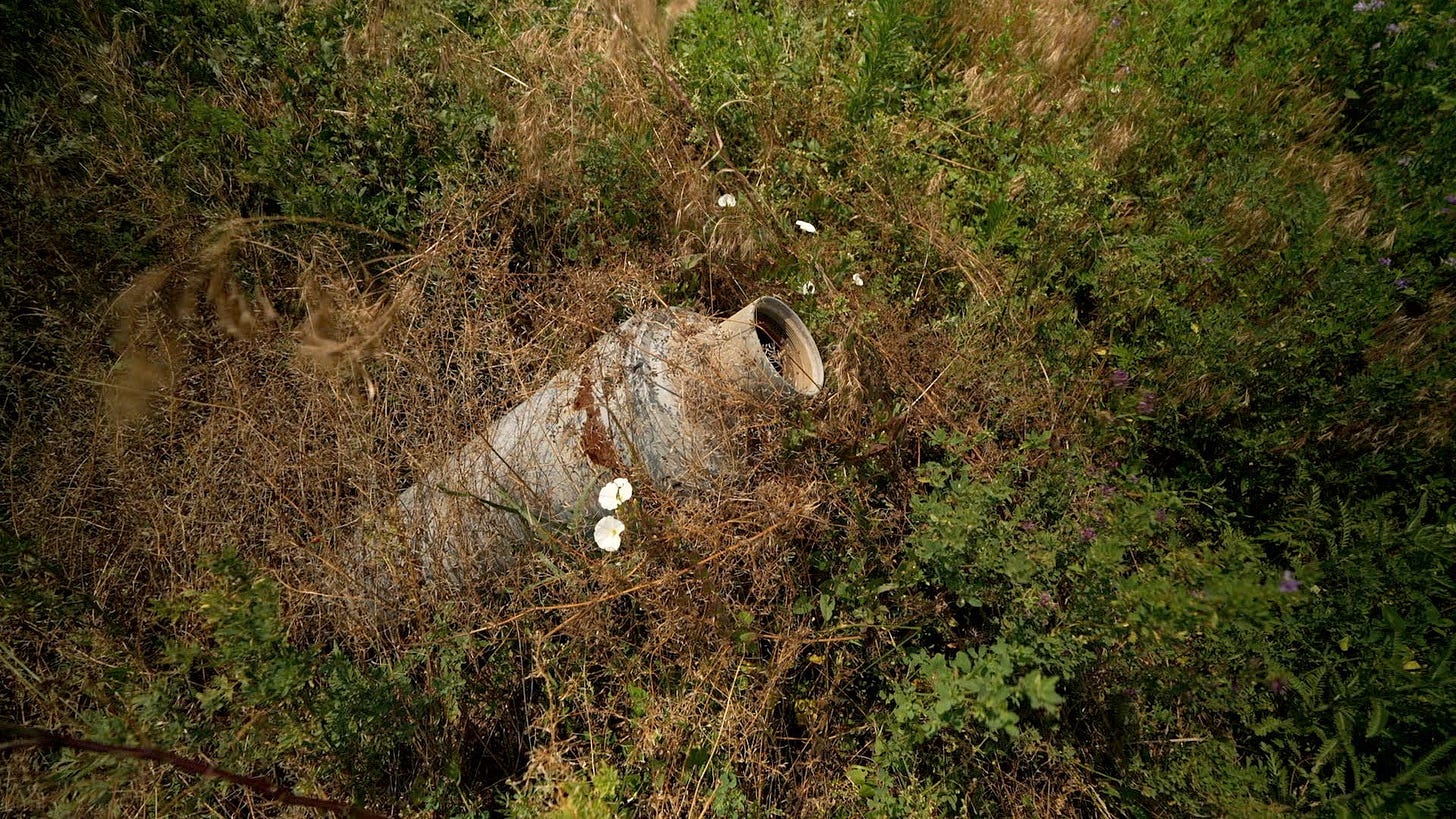
Startling footage showed the Dnipro and other rivers burst their banks, local residents marooned on roofs, swans floating in front of a theatre building in the city of Nova Kakhovka.
There were also concerns for the safety of the Zaporizhzhia nuclear power plant, Europe’s largest, located upstream from the Kakhovka dam, and using the water from the reservoir for cooling. Those were quickly allayed but worry for the wellbeing of hundreds of thousands of Ukrainians grew.
Immediate flood consequences
Measuring the scale of damage was made harder by the flooding occurring across an active Russian-Ukrainian frontline.
The Ukrainian authorities said an area of around 600 square kilometres (230 sq miles) was flooded, with over two thirds of the affected area on the Russian-occupied territory.
The UN estimated that up to 700,000 people on both sides of the frontline would be without access to clean water.
The head of Ukraine-controlled part of Kherson region, Oleksandr Prokudin, said two days after the dam destruction the “average level of flooding” in the region was 5.6 metres (18.41 ft).
Most of the assessments of the damage refer to the western, Ukraine-controlled bank of the Dnipro river.
The eastern bank, in red on the map below (or above) is under the Russian occupation. The flooding was worse there, as the eastern bank is lower and flatter.
The UN and other international agencies made multiple attempts to negotiate with Moscow access to the Russian-occupied flood-hit areas to offer some relief to civilians.
Russia declined these attempts, motivating them by security concerns and "other nuances."
“Knocked down again”
Another farmer the BBC met in the south of Ukraine is a 52-year old Vadym Sheremet.
He grows wheat, barley and sunflowers and his farm was successful before the war.
His village of Pavlo-Marianivka in the Mykolaiv region is around 80 km from the Kakhovka dam.
In early June he posted videos on social media, showing flood water reaching the roof of his house. When we visited him, he showed us the ruins of what was once his family home.
“Here we had a fireplace, where our family gathered,” he says pointing to a pile of bricks and remains of a chimney. “It was such a happy time.”

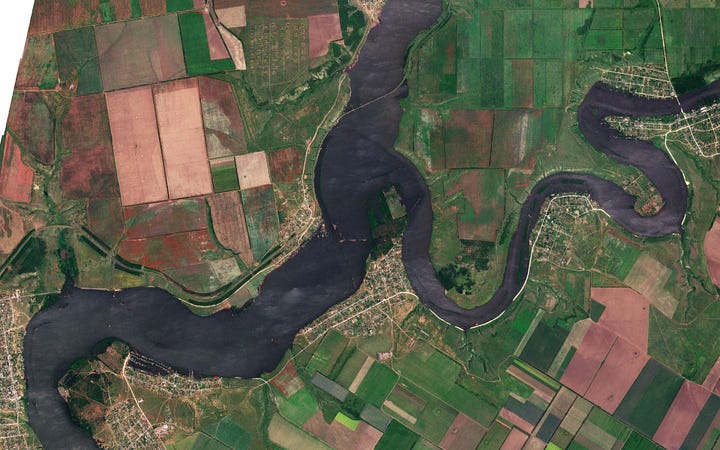
Vadym has farmed all his life and is not new to the profession’s highs and lows.
He is an active member of the community, a father of a large family, with many children and grandchildren. Yet he says that since the start of the Russian invasion he struggled.
His village was under the Russian occupation from March to November 2022. His farm building was destroyed - he thinks the Russian military thought it had been a Ukrainian HQ.
“Last autumn we had 250 hectares of grain, ready to harvest. Russians burnt it all. That was the first blow. We had no resources.”
“Then spring 2023 came. We gave it our all and sowed, however hard it was. Then the water came. And you understand that this is the reality. And you are knocked down once again.”
Long term consequence of the Kakhovka dam breach
Ukrainian authorities estimated that the cost of the breach was likely to add up to around $2bn. The list included:
Over 30,000 residential homes in need of rebuilding or repair;
Between 150 and 400 tonnes of oil and oil products escaped into local rivers and the Black Sea, contaminating them and ruining impacting ecosystems;
326,000 hectares of farmland left without irrigation;
Nearly 300 km of roads destroyed;
28 industrial facilities on both banks of the Dnipro flooded and are no longer functional.
This does not include the rebuilding of the dam which is impossible in the current conditions of active fighting. Such rebuilding may be necessary for the region to continue producing wheat and other produce.
The UN concluded in its report: “Rainfall is unlikely to provide sufficient and timely distributed amounts for reliable agricultural production, and lack of irrigation carries risks of increased production volatility in the region.”
“The destruction of the reservoir also increases risks of seasonal floods, particularly in the spring period following the snow melt.”
A report published by a US research institute, the Wilson Centre, gives a similarly grim assessment, calling the destruction of the dam” one of the biggest human-caused disasters of our time”:
“The loss of the Kakhovka Hydroelectric Power Plant means that more than one million hectares of land in three southern oblasts of Ukraine—Kherson, Zaporizhzhia and Dnipropetrovsk oblasts—will be unusable for the next three to five years for lack of a water supply.”
“We have to live”
A few weeks later after we first met, Vadym got in touch to invite us back to show improvements he’d made in his village.
With help from friends, he was building a new house, ploughing his fields to prepare for the new season and had plans to lay a new water supply to help his community.
Pavlo-Marianivka is similar to other local communities across the flood-affected area where locals with some help from the authorities and aid groups are looking for dynamic solutions to find water for drinking and irrigation. Digging new wells and laying new water supply lines is a common sight across a wide region in Ukraine’s south.
“Don’t stop believing that everything will work out,” Vadym shared his philosophy.
“Life is wonderful. You can give in or you can become stronger. Choose good and everything will work out.’
“Bring up children, care for your grandchildren, sow wheat. Live!”
Two days after we left Vadym’s village, his 20-year old son, Ivan, was killed by an explosive he stepped on by the roadside not far from his home.
Ukraine is now the most heavily mined country in the world, following the Russian occupation and heavy fighting.
Vadym could not speak with us for a while. Eventually he called us from his courtyard, sitting with his back against his tractor.
He said that Ivan was his “hands and feet” and someone who “could do anything”.
Despite everything Vadym refuses to be pessimistic: “We have to be strong. We have to live. We will make it.”
“We have good people who deserve to live in a peaceful and flourishing Ukraine.”
LONG READ: How Russian diplomacy lost its influence on Putin and failed to stop the war
By Sergey Goryashko, Elizaveta Fokht and Sofiya Samokhina. The invasion of Ukraine was not so much a failure of diplomacy as an illustration of the irrelevance of the Russian Foreign Ministry in the decision-making process in Vladimir Putin’s Russia. Over many years now Russian diplomats have seen their authority and position eroded, and their role incr…





